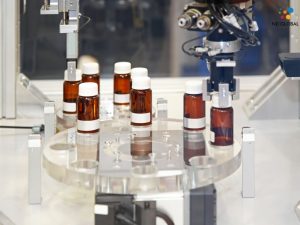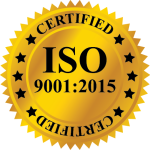Introduction: The Annual Product Quality Review (APQR)/PQR stands as a pivotal regulatory requirement for pharmaceutical companies, mandated by the FDA and governed by cGMP guidelines. This annual review is imperative for ensuring compliance and plays a crucial role in the revalidation of diverse manufacturing processes within the pharmaceutical industry.
Challenges in APQR/PQR Preparation: Traditionally, preparing an APQR/PQR has been a resource-intensive task, demanding significant time and effort. Gathering data from various departments, often stored in disparate Excel sheets, and manually inputting it into the required formats can be cumbersome. The process typically takes 3 to 6 months, involving dedicated efforts from Quality Assurance personnel and management.
Benefits of APQR: The benefits of conducting an APQR are extensive, including:
- Ensuring Unwavering Product Quality:
- Regular assessment contributes to consistent product quality.
- Enabling Flexibility:
- Allows adjustments in processes, raw material, and excipient specifications.
- Driving Process Refinement:
- Identifies areas for improvement in processing and control procedures.
- Minimizing Defects:
- Contributes to reducing quality defects.
- Enhancing Understanding:
- Improves insight into production processes and helps recognize trends.
- Identifying Risks:
- Pinpoints potential risks arising from process and material variations.
- Ensuring Compliance:
- Guarantees compliance with regulatory authority guidelines.
- Establishing Operational Efficiency:
- Promotes a uniform, efficient, and effective operational approach.
- Proactive Prevention:
- Fosters a culture of proactive prevention over reactive responses.
- Deepening Expertise:
- Enhances product knowledge and expertise.
Stages of the APQR /PQR Process: The APQR process involves several key stages, including but not limited to:
- Product Identification
- Documentation: Formulas and Specifications
- Record of Manufactured Batches
- Details on Raw and Packaging Materials
- Incidents: Deviations, Out-of-Specification Results, etc.
- Feedback Loop: Complaints, Returns, and Recalls
- Supplier Evaluation and Qualification
- Critical Quality Attributes and Process Parameters
- Validation Status of Areas, Equipment, Systems
- Stability Study Results
- Oversight of Outsourced Activities
- Change Controls and Alterations in Registration Conditions
- Post-Marketing Commitments
- Reporting and Handling of Adverse Reactions
- Actions Taken Following Previous APQR
- Measures Taken Based on APQR Conclusions
Roles and Responsibilities: Various departments play a crucial role in the APQR process
Quality Assurance: Reviews and consolidates deviations, recalls, and customer complaints.
Quality Control: Ensures up-to-date specifications and reviews stability data.
Validation: Assesses process validation and determines additional validation needs.
Regulatory: Provides crucial information on regulatory filings and evaluates specification or process changes.
Manufacturing: Conducts a thorough assessment of the manufacturing process for any modifications.
Engineering/Utilities: Provides data on Purified water/ WFI/Pure steam; AHU/HVAC monitoring data; EMS data;
Standard Operating Procedure (SOP) for PQR/ APQR: The SOP for APQR outlines key procedures including:
- Frequency of Review: Conducted annually for each product.
- Batch Information: Encompasses all product batches during the specified period.
- Trend Review: Includes trend analysis across multiple batches.
- Stability Data: Review’s chemical, microbiological, and physical degradation.
- Market Activity and Returns: Summarizes product returns and quality-related market activity.
- Complaint Handling: Investigates complaints and recommends corrective and preventive actions.
- Retention Samples: Inspects and records retention samples.
- Validation Reports: Includes validation studies on processes, equipment, or methods.
- Issue Identification and Resolution: Discusses significant issues, deviations, and resolutions.
- Regulatory Compliance: Assesses changes in registered specifications and compliance with regulatory commitments.
Conducting and documenting a PQR: PIC/S Guide to GMP (Clause 1.4) requires the following parameters (at minimum) to be assessed when conducting PQR.
| Parameter | Examples of information to be reviewed | ||
| Starting materials: A review of starting materials including packaging materials used in the product, especially those from new sources. | · Identify all starting and packaging materials received in the year and used in product manufacture. · Name of the suppliers/manufacturers of the materials · Supplier’s Certificate of Analysis (CoA) or Certificates of Compliance (CoC) or analytical results · Significant deviations or trends · Inspection rejection rate · Changes to production process or specifications by suppliers. · Results of analytical tests. | ||
| In process controls and quality control testing: A review of critical in process controls and finished product results. | Trend in process test results and QC test results in the manufacturing and packaging process from both chemistry and microbiology aspects: · Trending may take into consideration: · Physical variations – e.g. weight/dimension, friability, hardness, disintegration time, fill volume/overage, uniformity of content · Chemical variations – e.g. assay, related substances/manufacturing related impurities, pH, residual solvents · Rejected units – e.g. breakages, particulates etc. Yield reconciliation from stages of the manufacturing process using data from the associated batch records. | ||
| Manufactured batches (Intermediates, bulk, finished products and campaign batches): A review of all batches that failed to meet established specification(s) and their investigation. | · List deviations and nonconformances associated with the product under review · Identify deviation/CAPA reports and the associated batches · Identify current status of investigations providing a summary of the: – reason for the failure – completed investigations – corrective actions taken – effectiveness of the action | ||
| Deviations and CAPA: A review of all significant deviations or nonconformances, their related investigations, and the effectiveness of resultant corrective and preventive actions taken. | · List the following relating to significant deviations and non- conformances: – reason for the failure – completed investigations – corrective actions taken · Assess corrective actions for significant deviations and nonconformances from previous PQRs, indicating the status of each of the corrective actions, and their effectiveness | ||
| Process or testing changes: A review of all changes carried out to the processes, or analytical methods. | · Changes assessed should consider both those closed during · The review period and approved to commence but not yet implemented. The change status should be identified e.g., approved to commence, closed and associated dates. · Categorise the change type e.g. Component, labelling packaging materials, manufacturing process, analytical methods etc. And assess for trends and overall impact on quality · Identify the batches affected · Provide a justification for the change · Review the effectiveness/impact of the change on the batch under review | ||
| Marketing authorisations: A review of Marketing Authorisation variations submitted/granted/ refused, including those for third country (export only) dossiers. | List and review the Marketing Authorisation variations (include third country/export only dossiers): · Number of products submitted and granted/refused · Number of products registers locally and overseas · Any changes made to the product that require submission of a variation to the marketing authorisation · For the above, variations that have been submitted. If not submitted, the reasons therefore should be investigated and a conclusion documented · For variations submitted, whether or not they have been granted or refused. If refused, the impact should be assessed and documented | ||
| Stability programme: A review of the results of the stability monitoring programme and any adverse trends. | · List the number of batches of product in review included in stability studies during the review period · Review the results of any long term and ongoing stability of the bulk and marketed product · Include product information such as manufacturing date, reference to the associated method, shelf life, etc. · Review any out of specification results | ||
| Returned product: A review of all quality related returns and the investigations performed at the time. | · Batch number(s) · Reason for return and classification of reason for trending · Associated investigation report number · Actions taken and batches affected | ||
| Complaints and/or adverse events: A review of all quality related complaints and the investigations performed at the time. | · Batch number(s) · Reason for complaint and classification for trending · Previous instances over a designated time period · Associated investigation report number · Actions taken and batches affected · Current status | ||
| Recalls: A review of all quality related recalls and the investigations performed at the time. | · Batches/product recalled · Reason for recall and classification for trending · Regulator(s) notified and required regional responses · Associated investigation report number · Actions taken and batches affected · Current status | ||
| Review of past PQR responses: A review of adequacy of any other previous product process or equipment corrective actions. | The focus of this requirement is on previous PQRs and the state and effectiveness of associated actions: · Review and report on previous PQR capes and change implementation status · Assess effectiveness of actions taking into account the current PQR findings | ||
| Post marketing commitments: For new Marketing Authorisations and variations to Marketing Authorisations, a review of post marketing commitments (if any). | · Country of commitment · Product name and presentation · Description of the commitment · Status of the commitment | ||
| Equipment qualification: The qualification status of relevant equipment and utilities, e.g. HVAC, water, compressed gases, etc. | List and review the following for critical equipment/instruments and utilities in production and laboratory departments associated with the product in review: · Qualification/requalification status and the next qualification due date of equipment used in the production processes and QC laboratory · Reference to relevant qualification reports · Review changes made to equipment and utilities which resulted in requalification and assess for subsequent impact to product quality | ||
| Contractual agreements: A review of any contractual arrangements to ensure that they are up to date. | Review contracts for services associated with the product in review and report: · Name and address of the contract acceptor · Availability and details of the written contract · Type of service provided e.g. Testing or maintenance and calibration services · Confirmation that the services provided are aligned with the marketing authorisation Refer to PIC/S Guide to GMP, Chapter 7 for additional information on contract manufacture and contract requirements. | ||
SOURCE – Guidance for industry: Product Quality Review
Conclusion: Despite the resource-intensive nature of APQR, it remains indispensable in ensuring product quality and continuous improvement in pharmaceutical manufacturing processes. The collective efforts of various departments are essential for the successful execution of APQR, and the report generated contributes significantly to decision-making at all levels.
How ND Global Can Help: ND Global recognizes the significance of APQR and offers tailored solutions to streamline and enhance the process for pharmaceutical companies. ND GlobalX’s expertise uniquely positions them to assist companies in meeting APQR requirements effectively. Services include
- Efficient data compilation,
- Timely APQR preparation,
- Regulatory expertise,
- Process refinement recommendations,
- Risk assessment,
- Compliance assurance, S
- OP development,
- Cross-departmental collaboration,
- Validation status assessment,
- Supplier evaluation support,
- Documentation review, and
- Training and knowledge transfer










